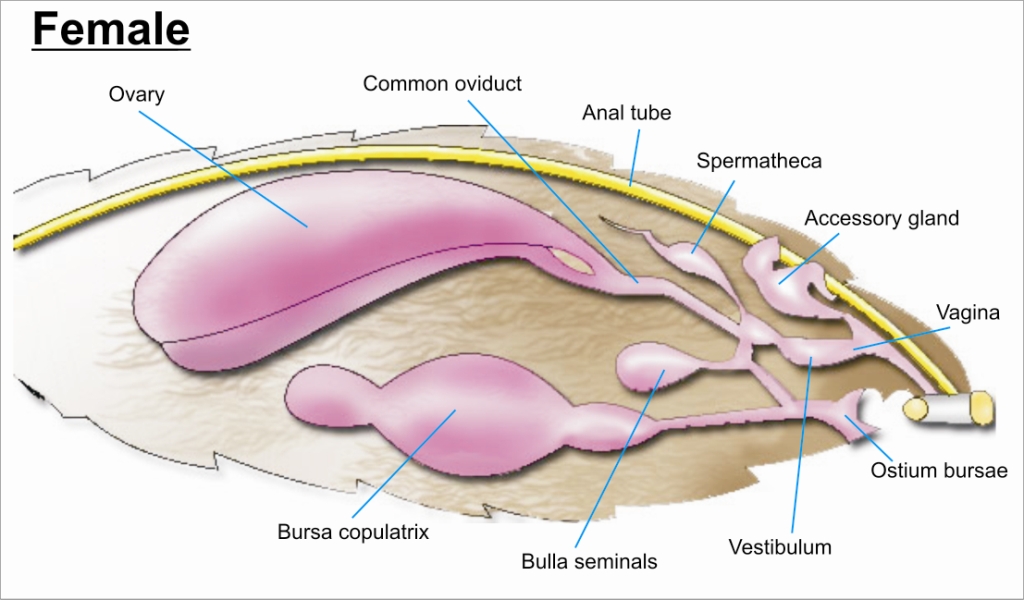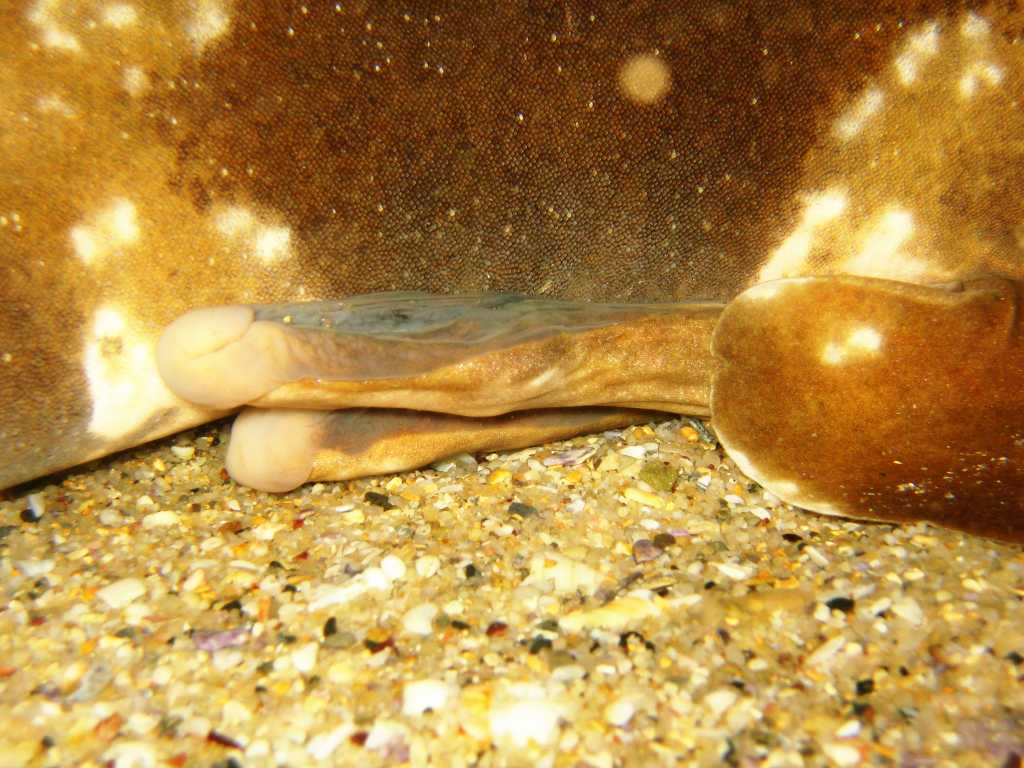|
Paramere
Parameres ('side parts') are part of the external reproductive organs of male insects and the term was first used by Karl Wilhelm Verhoeff, Verhoeff in 1893 for the lateral genital lobes in Coleoptera. The primary phallic lobes which appear in the nymph or larval stages may become a pair of penes in the Ephemeroptera or a simple median penis in the Thysanura. In higher insect orders from Orthoptera to Hymenoptera, each of the primary lobes is divided into two secondary lobes or phallomeres, termed parameres and mesomeres (NB: this use of the term "mesomere" is not to be confused with the Somite, same term in Segmentation (biology), segmentation embryology.) In adult insects parameres may elongate and become genital claspers. These claspers may themselves occur in two segments, forming a Anatomical terms of location#Proximal and distal, proximal basimere and a Anatomical terms of location#Proximal and distal, distal telomere (insect morphology), telomere or harpago ('grappling hook' ... [...More Info...] [...Related Items...] OR: [Wikipedia] [Google] [Baidu] |
Segmentation (biology)
Segmentation in biology is the division of some animal and plant body plans into a series of repetitive segments. This article focuses on the segmentation of animal body plans, specifically using the examples of the taxa Arthropoda, Chordata, and Annelida. These three groups form segments by using a "growth zone" to direct and define the segments. While all three have a generally segmented body plan and use a growth zone, they use different mechanisms for generating this patterning. Even within these groups, different organisms have different mechanisms for segmenting the body. Segmentation of the body plan is important for allowing free movement and development of certain body parts. It also allows for regeneration in specific individuals. Definition Segmentation is a difficult process to satisfactorily define. Many taxa (for example the molluscs) have some form of serial repetition in their units but are not conventionally thought of as segmented. Segmented animals are tho ... [...More Info...] [...Related Items...] OR: [Wikipedia] [Google] [Baidu] |
Insect Genitalia
Most insects reproduce oviparously, i.e. by laying eggs. The eggs are produced by the female in a pair of ovaries. Sperm, produced by the male in one testis or more commonly two, is transmitted to the female during mating by means of external genitalia. The sperm is stored within the female in one or more spermathecae. At the time of fertilization, the eggs travel along oviducts to be fertilized by the sperm and are then expelled from the body ("laid"), in most cases via an ovipositor. Internal Female Female insects are able to make eggs, receive and store sperm, manipulate sperm from different males, and lay eggs. Their reproductive systems are made up of a pair of ovaries, accessory glands, one or more spermathecae, and ducts connecting these parts. The ovaries make eggs and accessory glands produce the substances to help package and lay the eggs. Spermathecae store sperm for varying periods of time and, along with portions of the oviducts, can control sperm use. The ducts and sp ... [...More Info...] [...Related Items...] OR: [Wikipedia] [Google] [Baidu] |
Harpago
''Harpago'' is a genus of sea snails, marine gastropod mollusks in the family Strombidae, the true conchs. Harpago ('grappling iron') is also a term used in insect morphology for the distal end of a genital clasper In biology, a clasper is a male anatomical structure found in some groups of animals, used in mating. Male cartilaginous fish have claspers formed from the posterior portion of their pelvic fin which serve to channel semen into the female's c .... Species Species within the genus ''Harpago'' include: References Strombidae Gastropod genera {{Strombidae-stub ... [...More Info...] [...Related Items...] OR: [Wikipedia] [Google] [Baidu] |
Telomere (insect Morphology)
A telomere ('' pl.''; telomeres or telomeron), literally "end piece", is a term in insect morphology, and refers to a type of "genital clasper"; i.e.: in Mallophaga, a part of the genital sac that forms a sclerotized plate on both sides of the penis. The telomere may have sensilla. Present in higher insect orders from Orthoptera to Hymenoptera. In adult insects of these orders, genital claspers may develop in two segments, a proximal basimere and a distal Standard anatomical terms of location are used to unambiguously describe the anatomy of animals, including humans. The terms, typically derived from Latin or Greek roots, describe something in its standard anatomical position. This position pro ... telomere. Insect morphology {{Insect-anatomy-stub ... [...More Info...] [...Related Items...] OR: [Wikipedia] [Google] [Baidu] |
Anatomical Terms Of Location
Standard anatomical terms of location are used to unambiguously describe the anatomy of animals, including humans. The terms, typically derived from Latin or Greek roots, describe something in its standard anatomical position. This position provides a definition of what is at the front ("anterior"), behind ("posterior") and so on. As part of defining and describing terms, the body is described through the use of anatomical planes and anatomical axes. The meaning of terms that are used can change depending on whether an organism is bipedal or quadrupedal. Additionally, for some animals such as invertebrates, some terms may not have any meaning at all; for example, an animal that is radially symmetrical will have no anterior surface, but can still have a description that a part is close to the middle ("proximal") or further from the middle ("distal"). International organisations have determined vocabularies that are often used as standard vocabularies for subdisciplines of anatom ... [...More Info...] [...Related Items...] OR: [Wikipedia] [Google] [Baidu] |
Claspers
In biology, a clasper is a male anatomical structure found in some groups of animals, used in mating. Male cartilaginous fish have claspers formed from the posterior portion of their pelvic fin which serve to channel semen into the female's cloaca during mating. The act of mating in some fish including sharks usually includes one of the claspers raised to allow water into the siphon through a specific orifice. The clasper is then inserted into the cloaca, where it opens like an umbrella to anchor its position. The siphon then begins to contract, expelling water and sperm. The claspers of many shark species have spines or hooks, which may hold them in place during copulation. Male chimaeras have cephalic claspers (tenacula) on their heads, which are thought to aid in holding the female during mating. In entomology, it is a structure in male insects that is used to hold the female during copulation (see Lepidoptera genitalia for more). See also *Sexual coercion among animal ... [...More Info...] [...Related Items...] OR: [Wikipedia] [Google] [Baidu] |
Embryology
Embryology (from Greek ἔμβρυον, ''embryon'', "the unborn, embryo"; and -λογία, '' -logia'') is the branch of animal biology that studies the prenatal development of gametes (sex cells), fertilization, and development of embryos and fetuses. Additionally, embryology encompasses the study of congenital disorders that occur before birth, known as teratology. Early embryology was proposed by Marcello Malpighi, and known as preformationism, the theory that organisms develop from pre-existing miniature versions of themselves. Aristotle proposed the theory that is now accepted, epigenesis. Epigenesis is the idea that organisms develop from seed or egg in a sequence of steps. Modern embryology, developed from the work of Karl Ernst von Baer, though accurate observations had been made in Italy by anatomists such as Aldrovandi and Leonardo da Vinci in the Renaissance. Comparative embryology Preformationism and epigenesis As recently as the 18th century, the prevailin ... [...More Info...] [...Related Items...] OR: [Wikipedia] [Google] [Baidu] |
Somite
The somites (outdated term: primitive segments) are a set of bilaterally paired blocks of paraxial mesoderm that form in the embryonic stage of somitogenesis, along the head-to-tail axis in segmented animals. In vertebrates, somites subdivide into the dermatomes, myotomes, sclerotomes and syndetomes that give rise to the vertebrae of the vertebral column, rib cage, part of the occipital bone, skeletal muscle, cartilage, tendons, and skin (of the back). The word ''somite'' is sometimes also used in place of the word '' metamere''. In this definition, the somite is a homologously-paired structure in an animal body plan, such as is visible in annelids and arthropods. Development The mesoderm forms at the same time as the other two germ layers, the ectoderm and endoderm. The mesoderm at either side of the neural tube is called paraxial mesoderm. It is distinct from the mesoderm underneath the neural tube which is called the chordamesoderm that becomes the notochord. The pa ... [...More Info...] [...Related Items...] OR: [Wikipedia] [Google] [Baidu] |
Karl Wilhelm Verhoeff
Karl (or Carl) Wilhelm Verhoeff (25 November 1867 – 6 December 1944) was a German myriapodology, myriapodologist and entomology, entomologist, specialising in myriapods (millipedes, centipedes, and related species) as well as woodlouse, woodlice and to a lesser extent insects. Biography Karl W. Verhoeff was born on 25 November 1867 in Soest, Germany, Soest in Westphalia, the son of the apothecary Karl M. Verhoeff and his wife Mathilde (born Rocholl). He completed his ''Abitur'' examination in Soest in 1889 and completed his doctoral thesis in zoology in Bonn in 1893. In 1902 he married Marie Kringer, who died in 1937 during surgery. The marriage produced three children, two daughters and a son, the son dying in 1942 on the Eastern Front (World War II), Russian front. He was briefly employed (1900–1905) at the ' in Berlin, but for the remainder of his long career, he worked privately. Verhoeff undertook a number of collecting trips, including visits to the French Riviera, and R ... [...More Info...] [...Related Items...] OR: [Wikipedia] [Google] [Baidu] |
Phallomere
{{Short pages monitor ... [...More Info...] [...Related Items...] OR: [Wikipedia] [Google] [Baidu] |
Hymenoptera
Hymenoptera is a large order (biology), order of insects, comprising the sawfly, sawflies, wasps, bees, and ants. Over 150,000 living species of Hymenoptera have been described, in addition to over 2,000 extinct ones. Many of the species are Parasitoid wasp, parasitic. Females typically have a special ovipositor for inserting eggs into hosts or places that are otherwise inaccessible. This ovipositor is often modified into a stinger. The young develop through holometabolism (complete metamorphosis (biology), metamorphosis)—that is, they have a wormlike larval stage and an inactive pupal stage before they mature. Etymology The name Hymenoptera refers to the wings of the insects, but the original derivation is ambiguous. All references agree that the derivation involves the Ancient Greek language, Ancient Greek wikt:πτερόν, πτερόν (''pteron'') for wing. The Ancient Greek wikt:ὑμήν, ὑμήν (''hymen'') for membrane provides a plausible etymology for the term bec ... [...More Info...] [...Related Items...] OR: [Wikipedia] [Google] [Baidu] |





